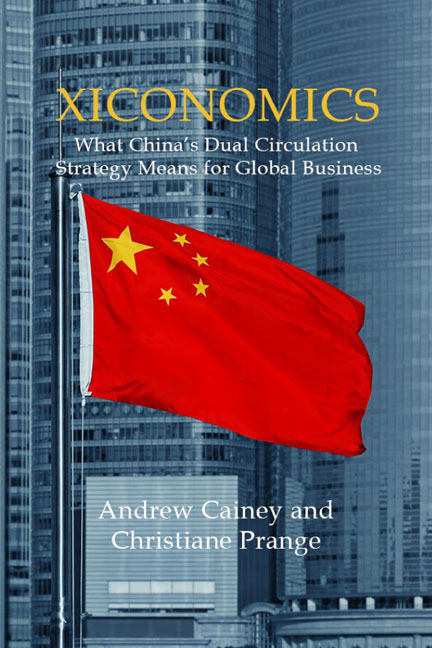1 - What is Dual Circulation Strategy?
Published online by Cambridge University Press: 23 January 2024
Summary
On 14 May 2020, following a meeting of the Politburo Standing Committee of the Communist Party of China (CPC), Dual Circulation was announced to the world as a “new development programme of mutual benefit through domestic– international dual circulation”. In other words, it highlighted the delineation between the domestic and the international economy. A month earlier, at a meeting of the Central Financial and Economic Affairs Commission, Xi had spoken in private of a “new development dynamic that focuses on domestic economic flow and features positive interplay between domestic flow and inter-national engagement”.
In October 2020 Han Wenxiu, assistant head of the CPC Central Financial and Economic Affairs Commission office, said that “the proposal for a new development programme that takes the domestic market as the mainstay while letting internal and external markets boost each other is the CPC's practical application of the objective laws of economic development. This is a proactive step, not a passive response; a long-term strategy, not an interim measure.”
Ask different analysts – both in China and overseas – what Dual Circulation Strategy really “is” or really “means”, and there will come a range of answers. It marks a closing of China to the world, as China seeks to decouple. Or it is really nothing new. It articulates a new form of globalization. Or it is a passing slogan of no import. Some may also observe that mentions of Dual Circulation in policy speeches peaked in 2020 and 2021, and argue that Party rhetoric has moved on to other phrases, such as Common Prosperity and High-Quality Development. Yet the key priorities of Dual Circulation remained clear in Xi's work report to the 20th Party Congress in October 2022. There is indeed much ambiguity about Dual Circulation – not just about the specifics, but also about the nature of the term. Is it best seen as a slogan (perhaps already past its sell-by date), a set of guiding principles or a series of policies and plans? “Dual Circulation” is by no means the only ambiguous phrase in the China policy lexicon. Such ambiguity is almost a defining feature of Chinese policy terms. It runs through discussions on Common Prosperity and the Belt and Road Initiative (BRI) too.
- Type
- Chapter
- Information
- XiconomicsWhat China's Dual Circulation Strategy Means for Global Business, pp. 13 - 24Publisher: Agenda PublishingPrint publication year: 2023



